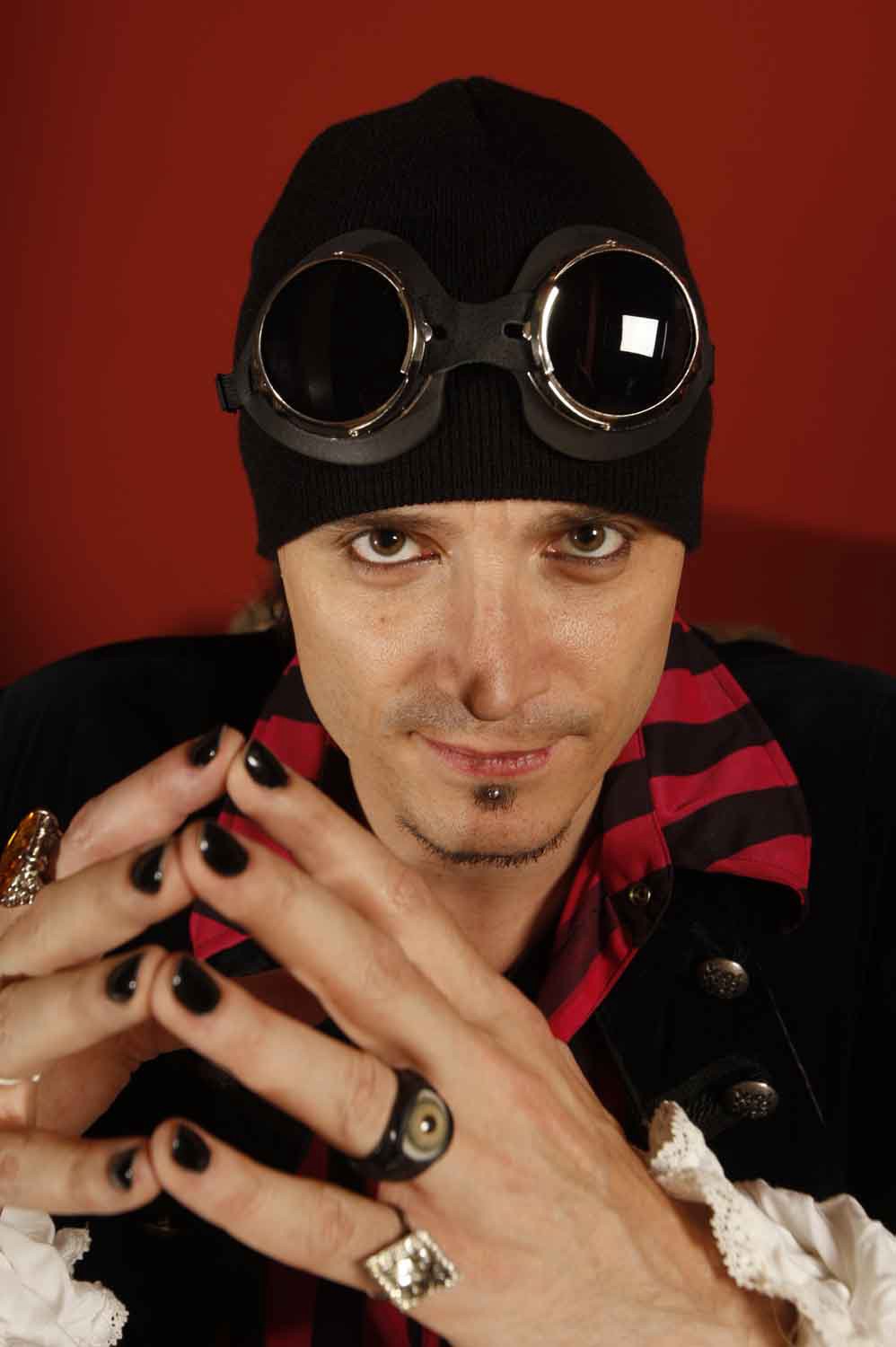Shows Of Prey
What “The Pickup Artist,” “To Catch A Predator” and “Cheaters” had in common.
Back in the mid-aughts, my father’s DVR overflowed with shows about predators. There were episodes of MTV’s “The Pickup Artist,” NBC’s “To Catch a Predator,” and the syndicated program “Cheaters,” and when I visited him, he would force me to join him in his “man cave” and watch them. He would laugh and laugh, and even though my brain was cobwebbed by grad school, I realized something about this experience was profoundly discomfiting. All three shows dealt with troubling subject matter of widely varying levels of cultural acceptance, but at the back of them was a simple theme: sexual predation. The zeitgeist has long since abandoned pickup artistry, serial entrapment of sometimes-reluctant sex offenders, and candid-camera busts of unfaithful partners, but why had some viewers embraced them in the first place? There was, I suppose, a weird kind of “gotcha” factor at play in all these cases: the aspiring pickup artists sometimes got their girl, the cheaters usually got their comeuppance, and the captured predators always got the humiliation many felt they so richly deserved. Viewers could be entertained by lifehacking at its crudest: one group of seemingly hopeless cases were trained to be better people, while another, far more dangerous group wound up locked away for a long time.

When pickup artistry burst on the scene, propelled by the alarming success of Neil Strauss’s The Game, it was promoted as a way of instilling confidence in put-upon beta males. Men like Mystery (né Erik von Markovik), the featured dating coach on “The Pickup Artist,” saw their duty as redeeming hopeless, introverted nerds, thereby granting them access to the princesses to which a long line of nerd-oriented entertainment had told them they were entitled. Budding pickup artists preyed upon reluctant women, hoping to “neg” and “kino escalate” them into “number closes,” in the process trying to win the various challenges and events set before them by the showrunners.
As described by Strauss, these terms had been developed and refined over the course of years of research shared on internet forums. The “seduction underground,” as the large online community of people doing this research was called, became the subject of widespread media attention — some of it critical, some of it merely descriptive or even weirdly encouraging. Through pickup artistry, aggressive predation was normalized as esteem boosting, and men like those described in Strauss’ The Game could be viewed in a positive light: they had transformed from zero to hero and taken what was rightfully theirs. But it was disturbing to see these tactics incorporated into an MTV series: it was like we were watching high-pressure sales being closed, with an undercurrent of sexual hostility running through the entire exchange. It was one thing to discover a troubling subreddit full of “rules” and “tips” for talking to girls, but something altogether different to see trainees sent into the field to utilize that material to attract unsuspecting “arbitrary targets” (ATs).
“To Catch a Predator,” a “Dateline” spinoff, occupied a similar place of prominence in mid-aughts culture. The show, which spanned only four seasons from 2004 to 2007, represented a collaboration among “Dateline” producers and the show’s correspondent Chris Hansen, local law enforcement, and an internet-based vigilante organization called Perverted-Justice that provided technical support for the sting operations being conducted. The show had an easy-to-follow format, as potential “predators” were identified and isolated in chatrooms by a Perverted-Justice team member, contacted via the phone by another team member, and then ordered to bring specific incriminating items with them, such as beer and condoms, when they travel to an appointed location where Hansen, a master of the disapproving-dad demeanor, awaited their arrival. After learning that the object of their trip wasn’t actually showering or drying off or whatever they always claimed to be doing, the entrapped individuals would nibble on complimentary cookies while stammering their way through an awkward interview with Hansen. When they attempted to leave, police would swarm over them, giving viewers a necessary sense of closure.

But the above doesn’t do justice to how uncomfortable “To Catch a Predator” was. It was brutally effective as prime-time filler, addictive binge-watching junk food that rewarded its audience with eye-for-an-eye punishments: the “predators” were themselves preyed upon by civic-minded crimebusters and the popular TV host who helped them. Ethical concerns abounded, and even Perverted-Justice volunteers sometimes entertained doubts about what they were doing (one volunteer, in commentary that accompanied an online Perverted-Justice profile, said that he initially felt bad for an overweight man but eventually realized that he too was “scum and sub-human”). The AIM chat logs still available on the Perverted-Justice website make for disturbing reading, but not nearly so much as how the show came to a bitter end: it was cancelled in 2008 following a bust that led to the suicide of a Dallas assistant district attorney who had been chatting and trading photos with Perverted-Justice volunteers. As profitable as the public torture of a highly specific class of mentally unwell people had been, the risks of liability were too great.
Finally, there was (and still is) “Cheaters,” a program in which something called the “Cheaters Detective Agency,” whatever that ill-defined entity might be, preys upon people in difficult or failing relationships, using hidden cameras to record evidence of infidelity that can be employed to anger these unwilling participants and delight home viewers. This show somehow remains on the air (on the CW Plus network, so only just barely) and is approaching its 300th episode. Its heyday, which encompassed the hosting tenures of the smarmy Tommy Habeeb and even smarmier Joey Greco, lasted from 2000 to 2009, when Inside Edition revealed that the 2003 stabbing of Greco had been staged by producers (in that regard, the producers of “Cheaters” could be said to have preyed on their target audience of couch potatoes).

The news about Greco’s phony stabbing was mostly met with laughter, as had been the case with similar revelations related to “The Jerry Springer Show,” but a great deal of this programming wasn’t staged, as with physical encounters that led an aggrieved Dallas woman, accused by Greco of cheating on her partner, to file charges against him for physically restraining her at her workplace in order to force her to watch videotape of her alleged misdeeds (Greco was acquitted). In fact, many episodes from the show’s early seasons depict such uncomfortable incidents, when either Habeeb or Greco keeps an allegedly unfaithful woman in place and forces her to answer questions on camera. Questions about consent, relationship openness, and other issues were put totally to the side; the complexities of long-term intimacy were never addressed.
But an ongoing cultural conversation has changed matters for the better. An awareness of bodily autonomy has driven the “seduction underground” into a more subterranean remove, its disaffected remnants metamorphosing into sites like RooshV’s loathsome “Return of Kings,” where contributors openly advocate for sexual assault (RooshV, for example, has gone so far as to propose legalizing rape) and have gradually drifted into the lunatic fringe of the alt-right. Public opprobrium remains high for individuals who have expressed a sexual desire for boys and girls under the age of consent, as seen from the number of ham-handed remarks wishing that these people were themselves sexually assaulted in prison, but no network has rushed to revive “To Catch a Predator”-style programming, a form of self-censorship unlikely to cease as long as the threat of a costly lawsuit looms.
And though “Cheaters” continues to air, high-profile reality fare, however problematic the depictions of race, gender, and sexuality seen therein, at least emphasizes a degree of voluntariness on the part of the featured players: the cast members of “The Bachelor” and “Keeping Up With the Kardashians” are all there, at least in theory, because they want to be. Meanwhile, a voyeuristic show like MTV’s “Catfish,” which still features aesthetic conventions such as blurred faces and confrontations, occupies a kind of middle position. Hosts Nev and Max have spent six seasons helping victims discover and then deal with the individuals who have been catfishing them, albeit with the aim of enabling all parties to better express their feelings rather than punishing the guilty.
These three lowbrow artifacts have aged out of our collective memory remarkably fast, but we owe it to ourselves to revisit them in order to understand why social justice campaigns against triggering or traumatizing content are necessary. And perhaps we still have a lot to learn about predation and exploitation, given that slightly more highbrow fare such as “Missing Richard Simmons” (Simmons claims to be just fine) and “S-Town” (the main character commits suicide but the show must go on) now occupy a seat at the entertainment table. Granted, these slow-building, addictive podcasts are perfect for our commutes, but they’re also on ethically shaky ground. Richard Simmons isn’t spotlight-seeking Kim Kardashian — he wants everyone to leave him alone! — and John B. McLemore, reclusive country genius though he might have been, is dead and thus unable to consent to anything. We already experience plenty of humiliation and discomfort in our own daily lives, with some people suffering more than others; the unwilling and vulnerable needn’t also function as grist for our entertainment mill.
